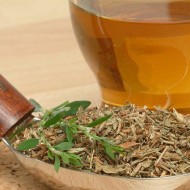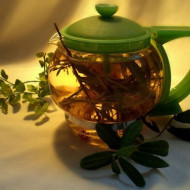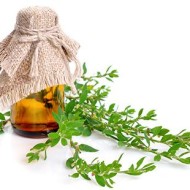Why is the herb-murava useful and how to use it in traditional medicine
Content
- 1 Description and distribution of grass-ants
- 2 Knotweed chemical composition
- 3 Video "Useful properties and use of knotweed"
- 4 Useful and medicinal properties
- 5 Collection and procurement of medicinal raw materials
- 6 The use of knotweed in traditional medicine
- 7 Medicines recipes
- 8 Harm and contraindications to the use of grass-ants
Description and distribution of grass-ants
So colorfully the people nicknamed the herbaceous plant bird mountaineer from the Buckwheat family (other names are knotweed, that is, fast-growing, goose grass or gosyatnik, muryzhnik). It was believed that knotweed absorbs the power of the earth and transfers it to everyone who walks on it barefoot. The grass began to be called an ant (ant) for its rich green color, which in Russia was called an ant.
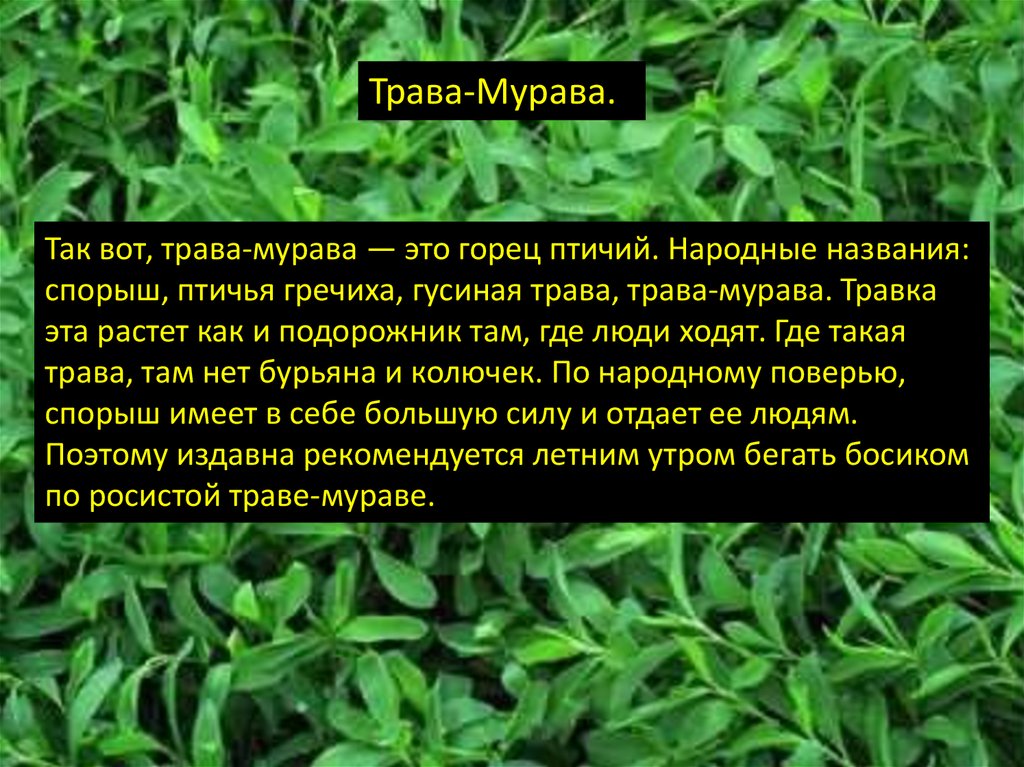
This is a weed that gets along well in places where other vegetation is uncomfortable. The bird highlander settles on city lawns, makes its way through cracks in the asphalt, grows near human settlements and on distant pastures, along river banks and on roadsides. Murava is resistant to trampling, capable of growing densely on impoverished lands, quickly restoring the cover.
To distinguish the culture from other representatives of the Buckwheat family, we give its detailed description:
- Herbaceous annual, the root system is not expressed, its role is played by lying shoots with short rooting processes.
- The stem is branched, creeping or slightly raised, with knees characteristic of the species.
- The foliage is miniature, in the form of lancets, elongated, deep green.
- The flowers are small, white, sometimes with pink outlines. They are grouped in inflorescences of 3-5 pieces, hiding in the leaf axils.
- Fruits are triangular nuts, black or brown. Edible for birds, hence another name for the culture - bird buckwheat.
How the plant reproduces
Like any weed crop, murava grass settles in favorable places arbitrarily. In some agricultural farms, it is purposefully bred as feed for livestock and poultry. Many summer residents plant grass for decorative purposes, forming pleasant lawns in infertile areas or decorating garden paths.
For self-breeding, it is easier to find a suitable area with already growing grass, dig up and transplant to the desired place. Another option is to wait for the seeds to appear, collect and sow on the selected plot of land.
Growing abundantly, the culture conquers new areas. They counteract this in two ways:
- organizing mulched strips along the edge of the garden;
- weeding out the weeds that have appeared in the area from the stray seeds.
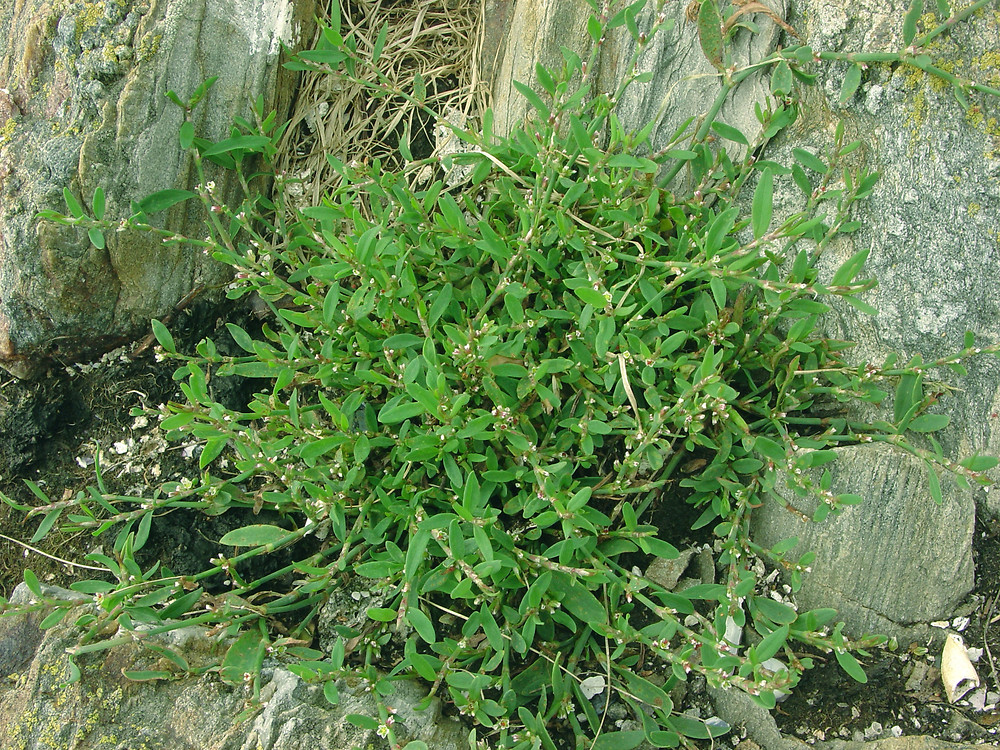
The plant does not need any care, natural conditions are enough.However, to enhance the density and juiciness, to make it more pleasant to walk barefoot, on hot days, the planted grass is irrigated with water in the evenings.
About diseases and pests
Nature has endowed the plant with extraordinary vitality. He is not afraid of any diseases, insects and pests. But thanks to its pleasant aroma and edible fruits, the grass attracts birds and animals. But whatever the invasion, the vegetation cover quickly recovers.
Knotweed chemical composition
To understand why ant has long been famous for its beneficial properties, you need to know its chemical composition. It includes the following components:
- tannins and resinous substances;
- organic acids and fats;
- carotene;
- minerals - iron, magnesium, potassium, calcium;
- Sahara;
- vitamins A, E, K, C;
- flavone glycosides.
Video "Useful properties and use of knotweed"
This video introduces the properties of a medicinal plant and describes how to use it.
Useful and medicinal properties
Highlander is harvested and used as a medicinal plant. Decoctions are made from the collection and juices are pressed, it is dried, using in the future as a ready-made raw material for drugs.
We list the areas of application of knotweed:
- Fighting kidney stones, urinary bladder and choleretic bladder.
- Catarrh of the stomach, inflammation of the organs of the genitourinary system.
- Getting rid of ailments of the gallbladder, liver diseases.
- Pulmonary diseases (including tuberculosis).
- Hypertension.
- Nervous disorders.
- Swelling of the legs.
- Hemorrhoids and ulcers.
- Seborrhea.
- Cuts, wounds and bruises.
- Diseases of the skin.
Even healthy people are advised to drink herbal tea to boost immunity and strengthen strength. Knotweed added to the slimming agent activates metabolism.
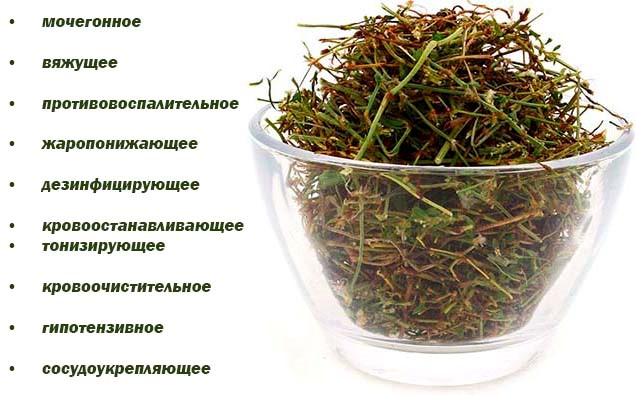
Collection and procurement of medicinal raw materials
For medicinal purposes, all parts of the culture are used - the stem, shoots, foliage and flowers. The latter are especially valuable; they are collected during the flowering period of the culture (from May to September), the rest of the parts are harvested in the second half of July. They go to the collection on dry, windless days, after the morning dew has dried. You need to choose herbs that grow away from residential areas, roads and industrial facilities.
The collected material is sorted out, getting rid of litter, then dried. The grass is hung under cover or in the shade, but not in direct sunlight. The finished raw materials are laid out in bags or glass jars. Shelf life is 2 years.
Freshly harvested material can be used for juice. It is advisable to use it fresh in potions, but to prepare it, you need to boil and roll it up under iron lids. To store canned material, use a cool place (cellar, refrigerator), where it will stand until next season.
The use of knotweed in traditional medicine
The list of ailments for which grass ant can help is impressive. The drugs prepared on its basis are used internally (infusion, broth, juice, tea) and externally (lotions, compresses).
Viral and infectious diseases
The components contained in the plant stop putrefactive processes, inhibit the development of viral and bacterial ailments. Knotweed is used to relieve pain, reduce inflammation, and decontaminate and heal cuts and wounds. Doctors often prescribe rinsing with a decoction of herb for sore throat and laryngitis, dental diseases.
If the body is attacked by a viral and bacterial infection, a knotweed-based remedy is used as an antipyretic to reduce the temperature, and also as a diaphoretic, so that harmful substances are eliminated as soon as possible. A herbal preparation based on knotweed can also be used in the complex treatment of tuberculosis.

Treatment of the cardiovascular and nervous system
Due to the ability of grass-ants to lower blood pressure, it is used for hypertension.Taking decoctions, it is possible to strengthen the immune system, increase the general tone of the body, which improves well-being in case of nervous exhaustion.
Circulatory system problems
Vitamin K present in Knotweed poultry increases blood clotting. Rinsing the mouth helps with bleeding from the gums, lotions - with heavy menstruation and blood loss after abortion, intestinal and pulmonary bleeding, as well as hemorrhoids.
The iron contained in ant helps with iron deficiency anemia. It accelerates the processes of lymph formation, intracellular metabolism, activates the generation of myo- and hemoglobin.
Diseases of the genitourinary system
If small stones appear in the kidneys, knotweed promotes their early crushing and elimination from the body. An important aid in this is provided by silicic acid, which acts on calcium deposits, crushing and destroying their structure.
It is possible to take decoctions based on the mountaineer with a preventive purpose in old age, in order to prevent the formation of sand in the urinary canals.
Decoctions and infusions improve the condition with:
- inflammation of the bladder and kidneys;
- pyelonephritis;
- cystitis;
- urethritis.
For men who have problems with potency, the plant will also help.
Diseases of the gastrointestinal tract
Ant infusion is prepared on a water basis, then used for such intestinal diseases as:
- pancreatitis;
- hepatitis;
- cholecystitis;
- salt deposits;
- cholelithiasis.
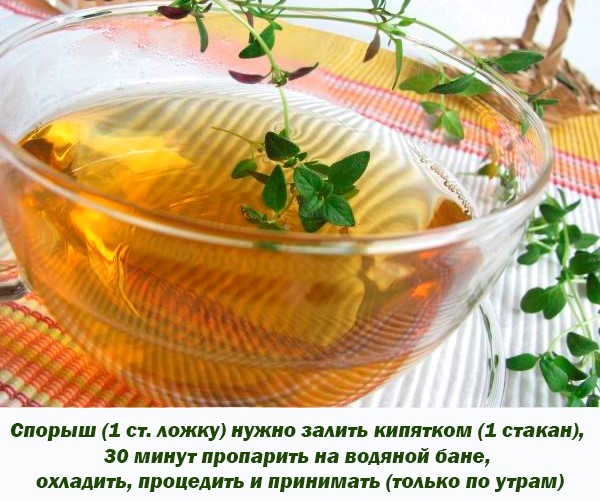
Hair and skin treatment
Plant-based lotions help in the treatment of:
- dermatitis;
- neurodermatitis;
- eczema.
Highlander infusion is used to rinse hair in case of severe hair loss.
Medicines recipes
Since different types of drugs are prepared from a plant, you should know the basic recipe.
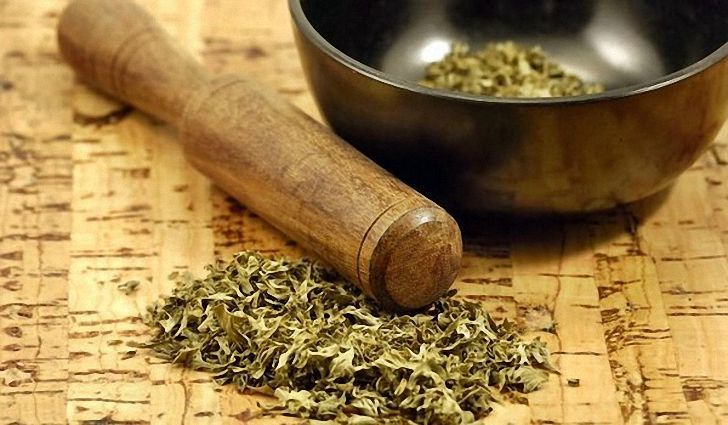
Infusion
The recipe is simple:
- a tablespoon of dry raw materials is poured with a liter of boiling water;
- infused for 2 hours;
- the composition is filtered.
Take 50 ml 3 times a day before meals. The course is designed for 3 weeks.
Decoction
The degree of exposure depends on the concentration. Prepares as follows.
- one measure of dry raw material is poured with 10 measures of water;
- make a small fire and simmer for 30 minutes;
- allow to cool.
Take 50 ml 3 times a day. If the broth is being prepared for external use, the concentration is increased (1 measure of raw material per 5 measures of water).
The juice
This will require freshly harvested herbs. The recipe is as follows.
- The collection is washed in running water.
- Grind in a blender or through a meat grinder.
- Juice is pressed from the green mass, diluted with boiling water at a concentration of 1:10.
Take 2 tablespoons 3 times a day. If the juice is required for external use, the concentration is increased.
Tea
Has a tonic effect. To prepare 2 teaspoons of raw materials, pour a glass of boiling water and leave for 10 minutes. Take before meals 3 times a day.
- Flask of the Bird Highlander
- Decoction of herb-ants
- Knotweed essential oil
Harm and contraindications to the use of grass-ants
Prepared potions have a multifaceted effect, however, curing one, they can do harm in something else. Therefore, you should consult your doctor before seeking help from folk remedies.
For example:
- with hypertension, knotweed is used in small doses and under the supervision of a specialist, since the pressure can drop sharply;
- when treating diseases of the kidneys and urinary system, spicy dishes, garlic and onions should be removed from the patient's menu, otherwise there is a risk of tissue irritation;
- if blood clotting is increased, the drug can harm, the same applies to the increased content of androgens.
It is strictly forbidden to use formulations based on herbs:
- during pregnancy;
- with polycystic ovary;
- people who have had a heart attack or stroke.
The use of herbal ant is not limited to the medical field. Having planted a plant on the site, owners can use it as a filling for pies or as a component of salads. In addition, it is possible to prepare yellow and green paint from the foliage, and blue from the shoots.

